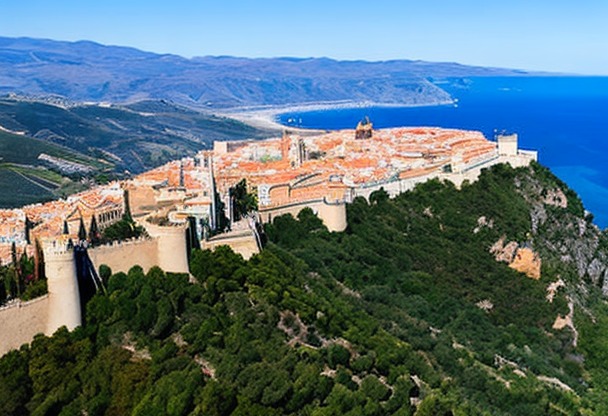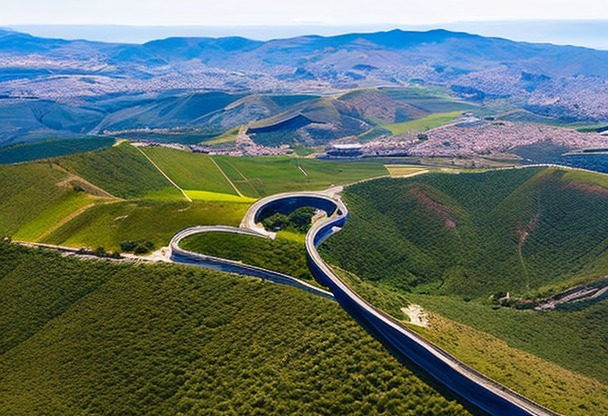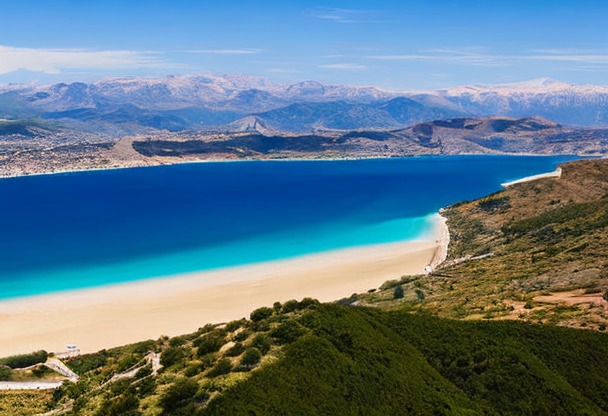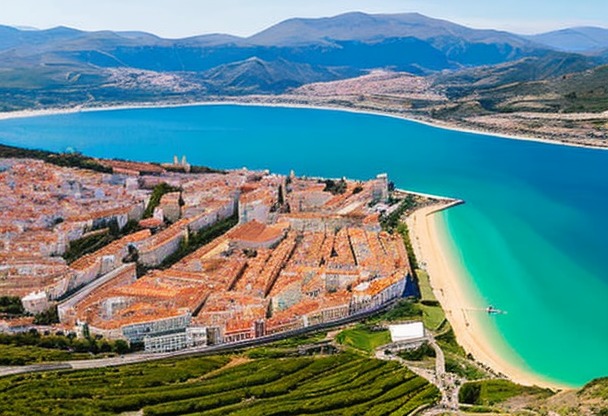Best time to travel to Spain
Choosing the right period for your trip to Spain can make all the difference. It's important to consider weather elements, seasonal events and peak tourist periods to maximize your travel experience.

Location
Climate
Tourist seasons: low and high season in Spain
Spain has two main tourist periods: high season and low season. Each has its advantages and disadvantages, depending on your preferences and budget.High season (June to September)
High season in Spain generally runs from June to September. During this period, the country welcomes large numbers of tourists, and temperatures are generally high. Beaches are often crowded, and it can be difficult to find accommodation without booking in advance.- Advantages : Enjoy the good weather and the many summer activities on offer.
- Disadvantages : More crowds, more expensive accommodation and tourist attractions.
Low season (October to May)
The low season runs from October to May. During this period, tourist numbers drop, accommodation prices fall and temperatures are cooler. It's an ideal time to visit Spain if you prefer to avoid the crowds and save on your travel budget.- Advantages : Fewer tourists, lower accommodation rates, cooler climate.
- Disadvantages : Fewer outdoor activities and some tourist attractions may be closed.
Major cultural events in Spain
Spain is famous for its many festivals and celebrations throughout the year. Here are some of the major cultural events to consider when planning your trip.Spring: Semana Santa and Feria de Abril
Spring in Spain is marked by several important events, including Semana Santa (Holy Week) and the Feria de Abril in Seville. Visit Holy Week takes place every year in the week leading up to Easter. This religious celebration is particularly important in Andalusia and the Castilla y León region. The streets are filled with solemn, colorful processions, with statues of saints carried by the faithful. La Feria de Abrilis a major popular festival that usually takes place two weeks after Easter. It is particularly famous in Seville, where locals and visitors gather to dance flamenco, enjoy tapas and watch bullfights.Summer: San Fermín and La Tomatina
Summer in Spain is marked by several not-to-be-missed events, including the San Fermín festivities in Pamplona and La Tomatina in Buñol. Visit San Fermín festivities are held every year from July 6 to 14 in Pamplona, Navarre. They are best known for the encierro, a bull run through the city streets, but also include other celebrations such as concerts, fireworks and dance shows. La Tomatina takes place on the last Wednesday of August in Buñol, near Valencia. The festival consists of a giant tomato battle, during which thousands of participants throw tomatoes at each other in a festive, convivial atmosphere.National and regional holidays in Spain
In addition to cultural events, it's important to take national and regional public holidays into account when planning your trip to Spain. Here are some of the most important public holidays:- January 1st New Year's Day (Año Nuevo)
- January 6 Epiphany (Epifanía)
- March/April Good Friday (Viernes Santo) and Easter Monday (Lunes de Pascua)
- May 1st Labour Day (Fiesta del Trabajo)
- October 12 Spanish National Day (Fiesta Nacional de España)
- November 1st : Toussaint (Todos los Santos)
- December 6 Constitution Day (Día de la Constitución)
- December 8 Immaculate Conception (Inmaculada Concepción)
- December 25 Christmas (Navidad)
Insurance

Your credit card does not cover you in all situations, that is whyIt is essential to take out insurance before you leave to avoid any unpleasant surprises. If you need to see a doctor or be hospitalized, in some countries, medical costs are very high and you will then find yourself having to pay several thousand euros.
Our partner Chapka Insurance proposes the contract CAP ASSISTANCE 24/24 with many essential guarantees.


Flights

Your flight has been cancelled or delayed ?
You may be eligible for a compensation of up to €600 ! For this, lawyers are responsible for handling your claim with the airline and are only paid when the reimbursement is effective.
In conclusion, no financial risk for you, only advantages!
Immigration figures for Spain
According to Spain's National Statistics Institute (INE), on January 1, 2020, the foreign population living in Spain was close to 5.8 million, or around 12% of the total population. The main immigrant groups are from Morocco, Romania and the UK. The year 2019 saw a significant increase in the number of foreigners residing in Spain, with an increase of almost 290,000 compared to 2018.Most popular visa types in Spain
- Work visa The work visa is one of the most popular visas in Spain. It allows foreign nationals to work legally in the country for a set period of time. To obtain this visa, it is generally necessary to have a job offer and meet certain conditions, such as professional qualifications and language proficiency.
- Student visa Spain: Many international students choose Spain to pursue their higher education. Spanish universities are renowned for their academic quality and cultural diversity. To obtain a student visa, it is generally necessary to provide proof of enrolment at a higher education institution and sufficient financial resources to cover living expenses for the duration of the studies.
- Family reunion visa This type of visa allows family members of foreign residents in Spain to join them on a permanent or temporary basis. Conditions for obtaining this visa vary according to the relationship and situation of the foreign resident in Spain.
- Non-profit visa The non-lucrative visa is intended for people who wish to reside in Spain without working. It is often requested by retired people or those with sufficient income to live in Spain without working. To obtain this visa, you need to prove that you have sufficient financial resources and full health insurance.
International tourism in Spain: key figures and revenues
Spain is one of the most visited countries in the world, attracting millions of international tourists every year. According to the World Tourism Organization (UNWTO), in 2019, Spain was the world's second most popular tourist destination after France, with almost 84 million foreign visitors. Revenues generated by tourism represent a significant part of the Spanish economy.Geographical breakdown of foreign visitors
The majority of international tourists visiting Spain come from Europe, particularly the UK, Germany and France. Other important markets include the UNITED STATESthe China, THE Japan and the Russia. The most visited regions are Catalonia, the Balearic Islands and the Canary Islands.Statistics on international tourist spending
In 2019, foreign visitors spent an average of 1,068 euros per person during their stay in Spain, an increase of 2.4% on 2018. The main sources of expenditure include accommodation, catering, transport services and cultural and leisure activities. British tourists are the biggest spenders in Spain, closely followed by Germans and French.Recent trends in international tourism in Spain
Statistics show that international tourism in Spain has grown steadily in recent years.Efforts to attract more tourists
The Spanish government and tourism industry have launched a number of initiatives to promote the country to international travelers and diversify revenue streams. These include the promotion of cultural, gastronomic and sports tourism, as well as the enhancement of less-visited regions.

